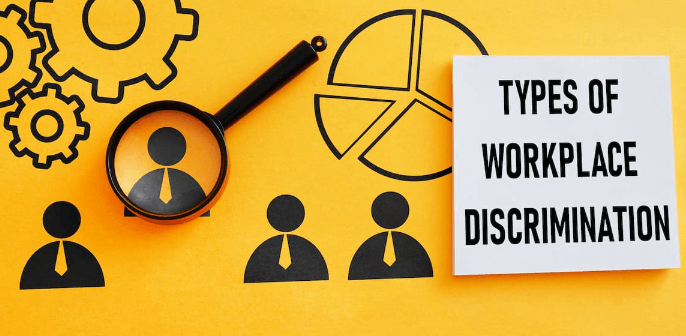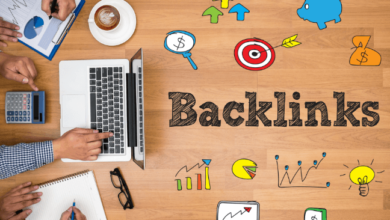What Is Workplace Discrimination?

Workplace discrimination remains a pervasive issue, silently damaging the fabric of modern organizations despite significant strides in societal progress. At its core, workplace discrimination entails the unjust treatment or unfavorable differentiation of individuals based on various characteristics, such as race, gender, age, religion, disability, or sexual orientation.
Don’t be afraid as there are legal protections from San Diego discrimination lawyer Nicholas J. Ferraro in place to combat this kind of behavior.
In this discussion, we will scrutinize the different types of workplace discrimination, its impact, and how organizations can address and prevent it.
Get ready to feed your mind so you can equip and protect yourself.
The Definition
Workplace discrimination refers to the unfair treatment of individuals based on certain characteristics, such as race, gender, or disability, in the context of employment. It occurs when an employee is treated differently or less favorably than others in similar situations, solely because of these specific characteristics. Discrimination can manifest in various forms, including but not limited to hiring and firing decisions, promotions, pay rates, job assignments, and even the terms and conditions of employment.
Discrimination can be explicit or subtle, overt or covert. It can be overt when an employer openly expresses bias or prejudice towards certain individuals or groups, such as making derogatory comments or denying them opportunities solely based on their characteristics.
Take note that workplace discrimination isn’t limited to just a few specific characteristics. It can also occur based on other factors like age, religion, national origin, or sexual orientation. The impact of discrimination can be severe, leading to a hostile work environment, decreased employee morale, and negative effects on productivity and overall well-being.
Types of Workplace Discrimination
Discrimination in the workplace can take various forms such as;
- Racial discrimination is where individuals are treated differently or unfairly based on their race or ethnicity. This can manifest in various ways, such as unequal opportunities for advancement or pay disparities.
- Gender discrimination is another prevalent form, where individuals are subjected to bias or prejudice based on their gender. This can include unequal treatment in hiring, promotions, or pay, as well as sexual harassment.
- Age discrimination occurs when individuals are treated unfavorably due to their age, often resulting in limited job opportunities or unfair treatment.
- Disability discrimination involves treating individuals with disabilities less favorably than others, whether in terms of hiring, job assignments, or accommodations.
- Religious discrimination occurs when individuals are treated unfairly based on their religious beliefs or practices.
Being aware of these different types of workplace discrimination allows us to work towards creating a more inclusive and equitable workplace for everyone.
Impact of Workplace Discrimination
When individuals experience discrimination in the workplace, it can have a profound impact on their mental and emotional well-being. It can lead to feelings of isolation, low self-esteem, and decreased job satisfaction. Discrimination can also negatively affect an individual’s physical health, as the stress and anxiety caused by such treatment can lead to various health problems, including an increased risk of cardiovascular disease and a weakened immune system.
Workplace discrimination can result in decreased productivity and morale within organizations. When employees feel unfairly treated or marginalized, they may become disengaged and less motivated to perform at their best. This can lead to decreased efficiency and effectiveness in the workplace, ultimately impacting the overall success and profitability of the organization. Discrimination can also create a toxic work environment, fostering hostility and conflict among employees, which further hampers teamwork and collaboration.
Above all, workplace discrimination can damage an organization’s reputation and brand image. News of discriminatory practices can spread quickly through social media and other communication channels, leading to public backlash and potential loss of business. In today’s increasingly diverse and inclusive society, organizations that fail to address and eliminate workplace discrimination may face legal consequences, including lawsuits and financial penalties.
Legal Protections Against Workplace Discrimination
These legal protections aim to create a safe and inclusive work environment where everyone has equal opportunities and rights.
Americans with Disabilities Act (ADA)
This law requires employers to provide reasonable accommodations to qualified individuals with disabilities, ensuring equal employment opportunities.
Read also How Signal Whittaker Online Billmanancourtpolitico
Title VII of the Civil Rights Act
It protects employees from unwelcome sexual advances, requests for sexual favors, and other verbal or physical conduct of a sexual nature.
Pregnancy Discrimination Act (PDA)
Prohibits discrimination based on pregnancy, childbirth, or related medical conditions.
Addressing Workplace Discrimination in Organizations
How can organizations effectively address workplace discrimination? To begin, organizations need to establish clear policies and procedures that explicitly prohibit discrimination in all its forms.
Organizations should provide comprehensive training programs on diversity and inclusion to educate employees about different cultures, perspectives, and unconscious biases. By promoting awareness and understanding, organizations can create a more inclusive and respectful work environment.
Besides, organizations should encourage employees to report instances of discrimination without fear of retaliation. This can be achieved by implementing anonymous reporting mechanisms and ensuring that complaints are handled promptly and confidentially.
Promoting diversity in the workplace is another effective strategy. Organizations should strive to create a workforce that reflects the diversity of the communities they serve. This can be achieved through targeted recruitment efforts, inclusive hiring practices, and diverse leadership development programs.
Above all, organizations should regularly assess their progress in addressing workplace discrimination. This can be done through employee surveys, focus groups, and analyzing diversity metrics. By continuously evaluating their efforts, organizations can identify areas for improvement and implement necessary changes to foster an inclusive and discrimination-free workplace.
Conclusion
Workplace discrimination is a harmful practice that involves treating individuals unfairly based on their race, gender, age, or other protected characteristics. It can have a significant impact on the affected individuals, leading to decreased job satisfaction, lower productivity, and widespread negativity within the organization. Fortunately, there are legal protections in place to combat workplace discrimination, and organizations should actively address and prevent such behavior to promote a fair and inclusive work environment.








